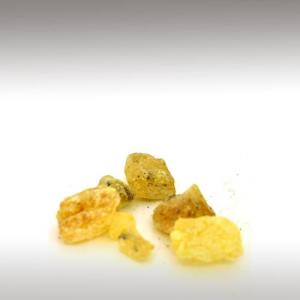
COPAIBA BALSAM ESSENTIAL OIL (COPAIFERA SPP) - ESSENTIAL OILS

BASE / GENERAL DATA
Information submited: February 3, 2015 Modified: March 7, 2018 By: OperaDreamhouse
Botanical Name: Copaifera spp
Common Method of Extraction: Steam distilled
Part Typically Used: Resin
Color: Colorless liquid
Consistency:
Perfumery Note: Top /Middle/ Base
Strength of Initial Aroma: Mild, balsamic, sweet, woody bouquet.
This plant resin have other names: Copaiba, Copal, Balsam Copaiba, Copaiva, Jesuit's Balsam.
Copaifera Spp is a well branched tropical tree of the Burseraceae (Copal family), that grows up to 100 feet tall. It has pinnate leathery leaves and blossoms are borne in whitish racemes. The flowers are small and aromatic. The fruit is a coriaceous legume containing a single seed.
Most Copaifera tropical tree species produce oleoresins in their trunks and stems, which are used as medicine. Copaiba oleoresin production and its overall quality vary among species and individuals. This information is necessary in order to define rules of sustainable management. In Acre, local people recognize five Copaiba morphotypes (“yellow”, “red”, “white” and two kinds of “black” Copaiba), which are defined in accordance with bark and leaf characteristics.
Copal is a type of resin produced by plant or tree secretions, particularly identified with the forms of aromatic tree resins used by the cultures of pre-Columbian Mesoamerica as a ceremonially burned incense, as well as for a number of other purposes. The word Copal is derived from the Nahuatl language word "Copalli", meaning "Incense".
To the pre-Columbian Maya and contemporary Maya peoples it is known in the various Mayan languages as "Pom", although the word itself has been demonstrated to be a loanword to Mayan from Mixe-Zoquean languages.
It is sometimes likened to, or substituted for Amber and put in jewellery. Copal is still used by a number of indigenous peoples of Mexico and Central America as an incense, used during ceremonies such as the sweat lodge ceremony.
The balsam may be steam distilled to give Copaiba oil, a colorless to light yellow liquid with the characteristic odor of the balsam and an aromatic, slightly bitter, pungent taste. The oil consists primarily of sesquiterpene hydrocarbons. its main component is caryophyllene.
The production of Copaiba oil is socially significant to the Amazon because it represents approximately 95% of the country's oil-resin production industry.
Common Method of Extraction: Steam distilled
Part Typically Used: Resin
Color: Colorless liquid
Consistency:
Perfumery Note: Top /Middle/ Base
Strength of Initial Aroma: Mild, balsamic, sweet, woody bouquet.
This plant resin have other names: Copaiba, Copal, Balsam Copaiba, Copaiva, Jesuit's Balsam.
Copaifera Spp is a well branched tropical tree of the Burseraceae (Copal family), that grows up to 100 feet tall. It has pinnate leathery leaves and blossoms are borne in whitish racemes. The flowers are small and aromatic. The fruit is a coriaceous legume containing a single seed.
Most Copaifera tropical tree species produce oleoresins in their trunks and stems, which are used as medicine. Copaiba oleoresin production and its overall quality vary among species and individuals. This information is necessary in order to define rules of sustainable management. In Acre, local people recognize five Copaiba morphotypes (“yellow”, “red”, “white” and two kinds of “black” Copaiba), which are defined in accordance with bark and leaf characteristics.
Copal is a type of resin produced by plant or tree secretions, particularly identified with the forms of aromatic tree resins used by the cultures of pre-Columbian Mesoamerica as a ceremonially burned incense, as well as for a number of other purposes. The word Copal is derived from the Nahuatl language word "Copalli", meaning "Incense".
To the pre-Columbian Maya and contemporary Maya peoples it is known in the various Mayan languages as "Pom", although the word itself has been demonstrated to be a loanword to Mayan from Mixe-Zoquean languages.
It is sometimes likened to, or substituted for Amber and put in jewellery. Copal is still used by a number of indigenous peoples of Mexico and Central America as an incense, used during ceremonies such as the sweat lodge ceremony.
The balsam may be steam distilled to give Copaiba oil, a colorless to light yellow liquid with the characteristic odor of the balsam and an aromatic, slightly bitter, pungent taste. The oil consists primarily of sesquiterpene hydrocarbons. its main component is caryophyllene.
The production of Copaiba oil is socially significant to the Amazon because it represents approximately 95% of the country's oil-resin production industry.

SPIRITUAL PRACTISES DATA

MEDICINE / HEALTH DATA

BEAUTY / COSMETICS DATA

FOOD / COOKING DATA
COMMENTS
No comments.


